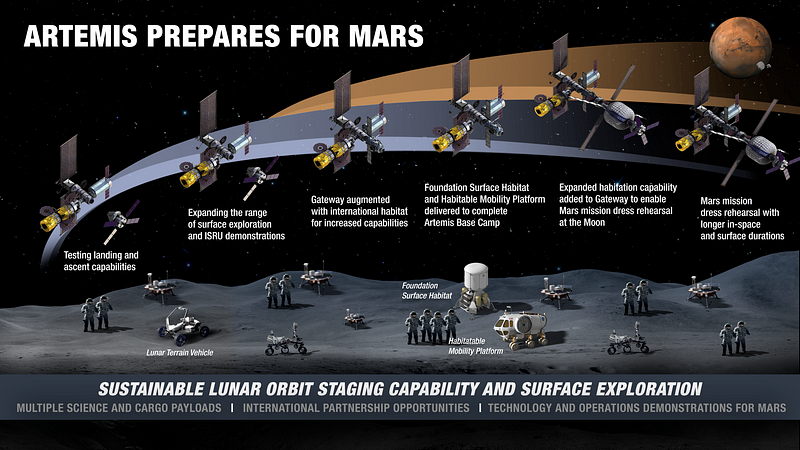NASA's Ambitious Plans for Lunar Resource Harvesting
Written on
Chapter 1: The Return to the Moon
NASA has reignited its space exploration initiatives after years of dormancy, particularly with the Artemis program, which aims to establish a sustainable lunar presence. Recently, I discussed the upcoming Mars missions led by the U.S., China, and the UAE, highlighting the growing potential for human exploration of the Red Planet. Concurrently, NASA is laying the groundwork for a lunar base that will serve as a launch point for deeper space missions, including those to Mars.
The Artemis program has ambitious goals, including returning humans to the Moon and establishing a base camp for ongoing lunar exploration and development. Notably, NASA plans to send the first woman to the Moon by 2024. To accomplish these objectives, NASA is collaborating with various startups to leverage innovative technologies and expedite the timeline for establishing a lunar base.
Traditionally, NASA allocates millions of dollars annually to numerous small businesses through its Small Business Innovation Research (SBIR) program. This time, however, it has directed $17 million to just four selected companies to meet the immediate requirements of the Artemis program. The establishment of a lunar base near the Moon's South Pole will necessitate advancements in communications, power systems, radiation protection, landing infrastructure, waste management, and storage solutions.
Section 1.1: Key Collaborating Companies
The following four companies have been enlisted to develop technologies crucial for the Artemis missions:
- Pioneer Astronautics: Specializing in the conversion of lunar regolith into oxygen and steel.
- Qualtech Systems: Focusing on autonomous monitoring and health management systems for spacecraft.
- Fibertek: Providing optical communication solutions for small spacecraft to transmit large data volumes from lunar landers back to Earth.
- Protoinnovations: Enhancing traction control systems for better maneuverability of robotic and crewed rovers on the Moon.

Chapter 2: The Promise of Lunar Regolith
Among these innovative companies, Pioneer Astronautics stands out for its ambitious goal of extracting usable oxygen from lunar regolith. For those unfamiliar, lunar regolith refers to the layer of soil on the Moon's surface, formed over billions of years due to meteorite impacts. Scientists estimate that this regolith can extend anywhere from 4 to 15 meters deep in various regions of the Moon.
Pioneer Astronautics aims to extract trapped gases, including oxygen, from this regolith. While this concept may sound far-fetched, successfully harvesting oxygen could revolutionize the sustainability of future lunar missions and human presence on the Moon. NASA's ongoing support for Pioneer Astronautics, which dates back to 2006, underscores the agency's confidence in the company's capabilities. Initially, the focus was on providing breathable air for astronauts, but recent funding initiatives indicate a broader vision for utilizing lunar resources for batteries and launch vehicles.
This startup aims to mine water on the Moon, showcasing innovative approaches to lunar resource extraction.
NASA collaborates with startups to tap into the Moon's resources, paving the way for sustainable lunar exploration.
Stay informed with the content that matters — Join my mailing list.